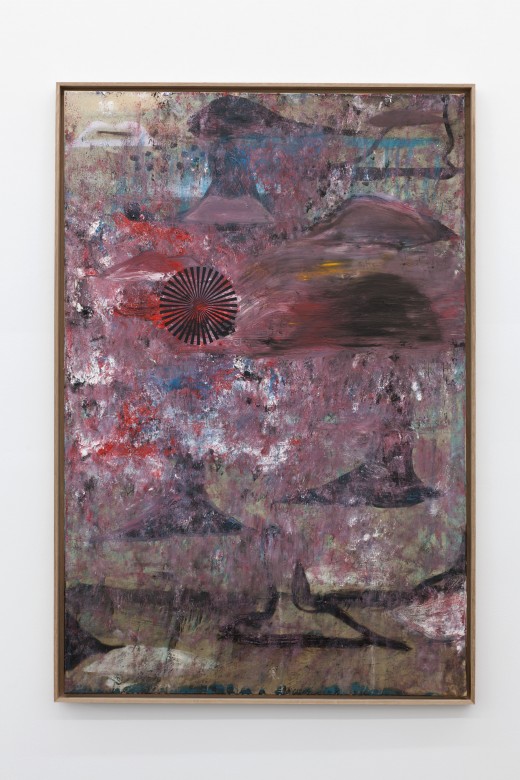peinture de nuages
2015
oil paint on canvas, 104 x 154 cm framed
Since 2012 Benoît Maire has been focussing on the art historical motif of clouds in painting. He was previously well known for his work in sculpture, film or with texts and has only begun painting again ten years after finishing his studies. His paintings are at first sight no more than what they depict: Cloud Paintings. Small -and large- scale paintings, partially arranged in groups. Constellations of clouds appear in a multiplicity of forms and colours. They move between figuration and abstraction. The process of Maire's painting is marked by chance and control. The actual motif develops through several phases, but also through the conscious application of various painting techniques. He paints on a white ground, as well as on unprimed, open-pored canvas. Colour is applied both flat and pastose in equal measure. It varies in the brushstrokes, is sprayed on, sometimes stripped away with a blade or becomes liquid. Maire does not just invoke and vary the motif but also the history of painting techniques and the blending of styles. Clouds were once described as the "schoolmasters of painting", and how he deals with the subject thus illustrates Maire's own artistic development. However, it should be noted that here it is neither a case of a naturalistic representation or of painting as illusion. The paintings themselves remain as fragments and reveal the process of their development just as much as their blank spaces.
For us – without our being aware of it – the significance of clouds is elemental. In their ephemerality and undefined multiplicity, we inscribe our wishes, hopes and fears. From the Middle Ages onwards, and increasingly in the 19th century, people have ascribed new functions to clouds as a motif in the firmament of western painting. This becomes visible, for instance, in the works of the English landscape painter, John Constable, or of William Turner, as well as those of the German Romantic, Caspar David Friedrich. They do not merely depict the phenomenon or commit clouds to religious meaning of an abstract proof of God's existence, but they develop them into a dynamic pictorial subject in their own right. Their characteristics, such as movement, change or dispersibility make them into "icons of the moment" (John Constable). The artistic "discovery" of clouds parallels their increasing importance in the natural and human sciences. As the French art historian, Hubert Damisch, puts it, clouds mask "an unrepresentable infinity and, at the same time, denote it, (...) and can in this way secure the paradoxical balance of a pictorial institution being closely bound up with the stipulations of science." In the context of the 20th century's globalisation, virtualisation and theory, clouds have become a distinctive model for paraphrasing the complexity of contemporary conditions of life and have even been stylised into a symbol of a networked architecture of information.
Thomas Thiel,
curator and Director at Bielefelder Kunstverein, Germany
